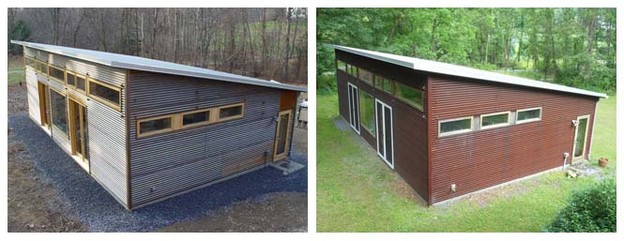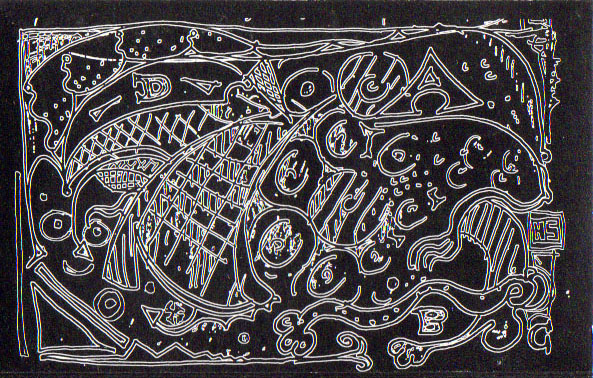In audio practice XII
Practice audio in

The diagram presented in my previous post partially encapsulates my endeavors with audio as a whole: working with—and sometimes with connection between—processed sound, music, language, performance, and multimedia. The chart contains a few names of people I have worked with and is not a bad outline, though as a mapping of a live performance, it does not intersect with the documentary work I’ve done.
Thinking back over the span of years encapsulated in these commentaries about recording experiences (1986-2014), the place where my audio practice started—with a handheld cassette unit and cheap tapes—is so massively different from where we are today. Portable (and post-able) recording technology in one form or another is now practically ubiquitous. Along the way, I made do (owed dues) with what I had access to, acquiring and/or using cassette, 8-track reel, 4-track cassette, DAT, Minidisc, SD card recorders, and other hardware. Thanks to computers and software decent and affordable home-studio setups, suitable to produce new and old material, are within the general public’s reach — although as my wife contends, practice plays an important role (i.e., you need to know what you are doing and that only happens with familiarity over time). Writing this final piece (for now), I’m preparing to pack up our beloved Girassol studio as part of a family move to the Hudson Valley. I have been ensconced in Girassol as a writer and artist since 2003, and hate to lose it (in favor of a temporary basement space), but we can quickly (and then again over time) recreate essentially the same setup pretty much anywhere.
Being active and interested in cultivating an audio practice has many benefits. Along the way I encounter (and chronicle activities of) many artists, who I document and preserve for review by myself and others. Beyond the ostensible scholarly benefits of such a focus, this path makes me acutely aware of, sensitive to, and engaged with sound and the sonic components of language and life. How could it not? This fact has finite influence on my everyday existence; I live in the countryside remote from urban areas because I like the way it sounds—it is conducive to what I need to function and progress as a person—and in turn I respect and understand the person who needs something else in order to make that happen!
A burdensome aspect of being obsessed with making audio recordings is the material bulk of such an occupation; twenty-five years into it, I have shelves and a large metal bin and many several smaller boxes completely filled with cassettes, DATs, MiniDiscs, and other media (including approximately 200 Hi8 and MiniDV videos, which I hope to attend to in the near future). This condition is in some ways a diminished issue in the digital era, as the hardware is compact and thousands of files can be stored on small hard drives. The pressing issue then becomes—as it is always—the annotation and organization of matter. What good is making sound files and building a collection if you don’t know what’s on them and where they are? In this regard, I have been largely remiss. Twenty years ago I made an index of recordings in my possession, but haven’t updated it since. Working with PennSound has inspired me to get organized. At least everything I have is organized, by media, in one place—though I have not meticulously annotated the contents of the tapes as a better practitioner would.
Historically, on its own, my archive would exist as inert documentation that features dynamic human expression. Eventually, these artifacts might end up isolated in a library somewhere, and a few souls interested in the most recent fin de siècle (and beyond) poetics would hear and appreciate them. In order to undermine that exclusive condition, however, I (and others involved with PennSound) spend many hours locating and digitizing recordings, which become an important aspect of my/our work. Since I spent much of the previous fifteen years writing two monographs, I now have the liberty to prioritize such tasks as research; otherwise it wouldn’t get done without assistance (someone else’s efforts).
With the Internet and mobile technology, audio practices overall require less bulky, and in many ways less demanding (i.e. easier-to-use) gear. If one is motivated, audio recording, archiving, and network building is much easier now given the facility of digital delivery systems for producer and consumer. Audiophiles always point out the imperfections of mp3 technology and will bemoan use of mono instead of stereo recording, but the way I see it having something decent to listen to over the network is far better than having nothing (and waiting for the CD to arrive). With properly tuned initiative, everyone can be heard, and materials relevant to one’s interests located through search engines and tags. Apps such as Rock Band are legitimate means by which to make decent field (and other types of) recordings. Anyone with an email account can get a free Soundcloud (or other type of mp3 hosting, such as Bandcamp or Soundclick) account, building pathways for posting audio files, cultivating virtual presence, and beginning to expand her/his artistic community.

Some unspoken influences upon the stories imparted in these commentaries I should acknowledge. Harry Smith, who I got to know and spend time with between 1986 and 1991, was a significant inspiration (we used a drawing he did in my notebook as the image for a we magazine cassette cover, above). Seeing Smith in action, taping practically everything (ordinary things… street sounds, common birds, punk rock shows) whenever he could, hearing him discuss the discoveries you can make by listening back to your surroundings, particularly in the realm of synchronicity of sound and thought—not to mention his focused projects, documenting folk music and native American song—made a strong impression. As did the lore of poet Paul Blackburn’s documentary work (housed at UC San Diego), Alan Lomax, and others (known and unknown) who have lugged recorders around in order to capture fleeting cultural moments. Though we only met once, I completely respect Kush’s regional documentation of (Bay Area) poets, and also admired the Poetry Project’s dedication to archiving events they host. Pushing buttons makes us partners as technicians of the ephemeral.
In audio practice